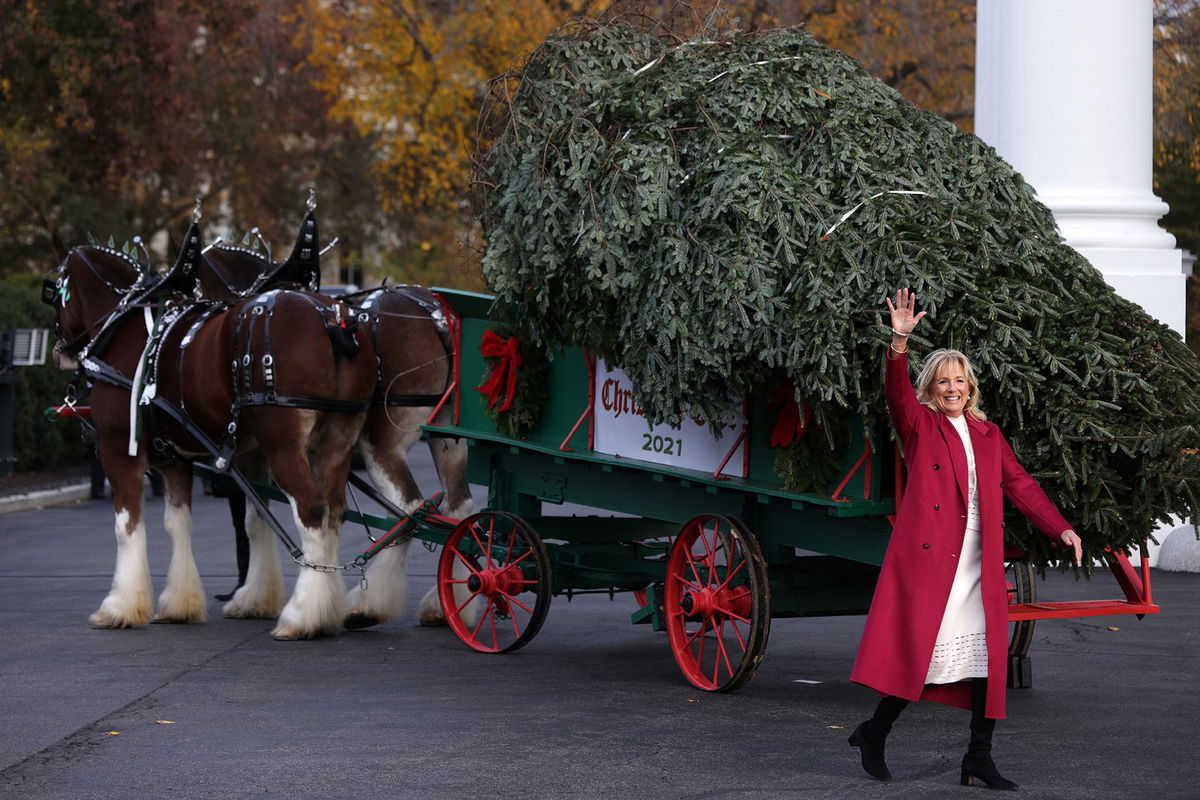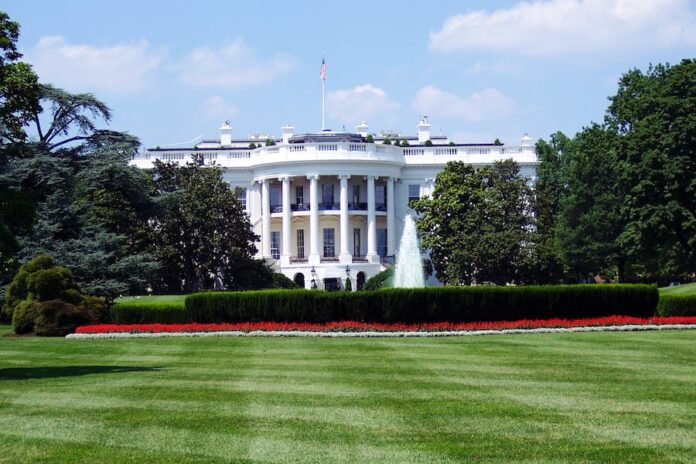President Teddy Roosevelt banned Christmas trees in the White House in 1901. During his presidency, President Teddy Roosevelt made the controversial decision to ban Christmas trees in the White House in 1901.
While Christmas trees had been a popular tradition in the United States for many years, the ban was enacted as an effort to conserve the environment and protect natural resources. This decision sparked both support and criticism from the public, with some praising Roosevelt’s commitment to conservation and others expressing disappointment over the loss of a beloved holiday tradition.
Despite the ban, it did not dampen the overall spirit of Christmas in the country, as families across the nation continued to embrace the tradition of decorating trees during the holiday season.
The Controversial Tradition Of The White House Christmas Tree
The White House Christmas tree is a longstanding tradition that brings joy and festive spirit to the nation’s most iconic residence. However, throughout history, this tradition has faced its fair share of controversies and challenges. From the origin of the White House Christmas tree to the prestigious decorations that have adorned it over the years, let’s explore the fascinating history behind this symbol of holiday cheer.
The Origin Of The White House Christmas Tree
The White House Christmas tree tradition can be traced back to the 19th century when the evergreen tree first became a popular symbol of Christmas in America. However, it wasn’t until 1889 that the first recorded instance of a Christmas tree in the White House occurred during President Benjamin Harrison’s administration.
According to historical accounts, the White House Christmas tree of 1889 was a live tree, adorned with candles and ornaments. This marked the beginning of a cherished tradition that would continue to evolve and captivate the American public for years to come.
Prestigious Decorations Throughout The Years
As the years went by, the White House Christmas tree transformed from a simple holiday decoration to a symbol of presidential elegance and style. Each administration put its unique touch on the tree, showcasing the creativity and grandeur of the time.
Ambitious decor themes, luxurious ornaments, and stunning lighting displays became the norm for the White House Christmas tree. The First Ladies, in particular, played a significant role in selecting and designing the decorations, ensuring that each year’s tree would be more spectacular than the last.
One notable example of a prestigious White House Christmas tree is the famous “Blue Room” tree during President John F. Kennedy’s administration. Inspired by the Nutcracker Suite ballet, the tree featured stunning blue and gold decorations, capturing the attention of the nation and setting the bar high for future decorations to come.
| President | Notable Christmas Tree |
|---|---|
| Calvin Coolidge | The first electrically lit Christmas tree |
| Ronald Reagan | The largest Christmas tree displayed in the White House |
| Bill Clinton | A tree adorned with letters to Santa from children around the world |
Through wars, economic crises, and political turmoil, the White House Christmas tree has remained a symbol of hope, unity, and holiday tradition. It continues to dazzle visitors from around the world and inspire generations with its splendor.
As we look to the future, it’s fascinating to anticipate how the White House Christmas tree tradition will evolve and reflect the changing times. One thing is for certain: no matter the controversies or challenges that may arise, this iconic symbol will always endure as a beacon of holiday joy in the heart of American politics.

Credit: en.wikipedia.org
A Surprising Ban On Christmas Trees
Christmas trees have long been a symbol of holiday cheer, adding a festive touch to homes and public spaces alike. However, did you know that there was a time when the White House, the residence of the President of the United States, had a surprising ban on Christmas trees? Let’s explore the intriguing story behind this unexpected turn of events.
The President Responsible For The Ban
It was during the presidency of Theodore Roosevelt that the ban on Christmas trees in the White House took place. Theodore Roosevelt, the 26th President of the United States, held office from 1901 to 1909. Known for his progressive policies, strong personality, and love for nature, Roosevelt’s decision to ban Christmas trees in the White House shocked many.
Reasons Behind The Decision
Theodore Roosevelt’s ban on Christmas trees was driven by his deep concern for the environment and wildlife conservation. At the time, there was a growing awareness of the negative impact of deforestation and the need to protect natural resources. Roosevelt, who was also an enthusiastic supporter of the National Parks system, believed that using trees for decorations in the White House contradicted the principles of conservation he held dear.
Another factor that influenced Roosevelt’s decision was the increasing commercialization of Christmas. He believed that the emphasis on extravagant decorations and the cutting down of trees for mere aesthetic purposes detracted from the true spirit of the holiday. Roosevelt sought to shift the focus back to the tradition of spending quality time with loved ones rather than extravagant displays.
Public Outrage And Backlash
The decision to ban Christmas trees in the White House by a former president stirred up a storm of public outrage and backlash. The American people, deeply attached to this cherished tradition, voiced their strong disapproval, leading to significant political and cultural ramifications.
Reactions From The American Public
The banning of Christmas trees in the White House quickly ignited a firestorm of public debate, as citizens across the nation voiced their discontent. On national television, news anchors invited Americans to share their thoughts, resulting in a flood of impassioned responses from coast to coast. Messages poured in, flooding social media platforms with outrage over this decision.
The public’s reaction ranged from shock and disbelief to anger and disappointment. Families who eagerly anticipated the annual White House Christmas Tree ceremony felt a profound sense of loss. Many expressed that the ban undermined the joyous spirit of the holiday season, which has long been associated with the festive display of Christmas trees.
The decision’s timing was especially incendiary, as it was announced just weeks before the holiday season was set to commence. The sudden removal of such a deeply rooted tradition sparked outrage and intensified existing political divisions.
Political And Cultural Ramifications
The ban on Christmas trees in the White House had far-reaching political and cultural ramifications that reverberated throughout the nation. Some argued that it symbolized a disregard for long-standing traditions and highlighted a break from the values that had been an integral part of American culture.
Politicians from both sides of the aisle faced mounting pressure to address the situation. Public demonstrations erupted outside the White House, demanding an immediate reversal of the ban. Elected officials were bombarded with messages from constituents, expressing their disappointment and urging them to take action.
This contentious decision further divided the nation along political lines, as debates ignited over the role of tradition and the influence of government in personal and cultural matters. The ban on Christmas trees became a rallying cry for those who felt their values were being disregarded, culminating in a vigorous national dialogue about the preservation of cherished customs and the importance of religious expression.
The controversy also highlighted the power of tradition in shaping national identity and fostering a sense of belonging. The American people, deeply connected to their cultural heritage, mobilized en masse to protect a beloved tradition that they felt was an inherent part of their collective identity.
Ultimately, the ban on Christmas trees in the White House became a pivotal moment in American history, demonstrating the resilience and determination of the American people to protect and preserve their most cherished customs.

Credit: www.facebook.com
A Shift In Tradition
When it comes to holiday traditions, one of the most iconic symbols is the Christmas tree. However, there was a time when the White House did not display a Christmas tree during the holiday season. In what can be considered a shift in tradition, one president made the controversial decision to ban Christmas trees in the White House. This decision sparked both criticism and debate, but eventually, the tradition of the White House Christmas tree was reinstated. Let’s delve into the fascinating story of the ban and the return of the Christmas tree to the White House.
Return Of The Christmas Tree To The White House
After years without a Christmas tree in the White House, the ban was lifted and the tradition was revived. It was none other than President Franklin Pierce who brought back the Christmas tree to the White House in 1856. This act marked a significant shift in tradition and received widespread praise and appreciation from the public.
Since then, every year, the White House has featured a beautifully decorated Christmas tree as a symbol of holiday cheer and celebration. The return of the Christmas tree to the White House has become an anticipated tradition, with each administration putting its unique touch on the decorations.
Evolution Of The White House Christmas Tree Tradition
The White House Christmas tree tradition has evolved throughout the years, reflecting the spirit of each administration. While the first trees featured simple decorations and candles, they have since grown more elaborate and intricate.
In recent decades, the White House Christmas tree has become an extravagant showcase of creativity and artistry. Each year, the theme and design are carefully selected to captivate visitors and spread joy during the holiday season. From themed ornaments representing important causes to stunning lighting displays, the White House Christmas tree continues to enchant generations of spectators.
This evolution of the White House Christmas tree tradition highlights the importance and significance of this iconic symbol of the holiday season. It represents unity, joy, and the spirit of giving, reminding us of the power of tradition in bringing people together.

Credit: krdo.com
Frequently Asked Questions For Which President Banned Christmas Trees In The White House
When Were Christmas Trees Banned In The White House?
Christmas trees were banned in the White House in 1901 by President Teddy Roosevelt.
Which President Didn T Want A Christmas Tree In The White House?
President Theodore Roosevelt didn’t want a Christmas tree in the White House during his presidency.
What President Lifted The First National Christmas Tree On The Lawn Of The White House?
President Calvin Coolidge lifted the first National Christmas Tree on the White House lawn.
Was Franklin Pierce First President To Have Christmas Tree In White House?
Yes, Franklin Pierce was the first president to have a Christmas tree in the White House.
Q: Which President Banned Christmas Trees In The White House?
A: President Theodore Roosevelt banned Christmas trees in the White House during his presidency.
Conclusion
The ban on Christmas trees in the White House was an interesting historical event. Despite its controversial nature, President Theodore Roosevelt’s decision to exclude Christmas trees was a temporary measure aimed at conserving resources. While it may have disappointed some, it showcases the importance of conservation efforts and adapting to the needs of the time.
This decision remains a significant part of the White House’s history, reminding us of the ever-changing traditions and practices within our nation’s leadership.

